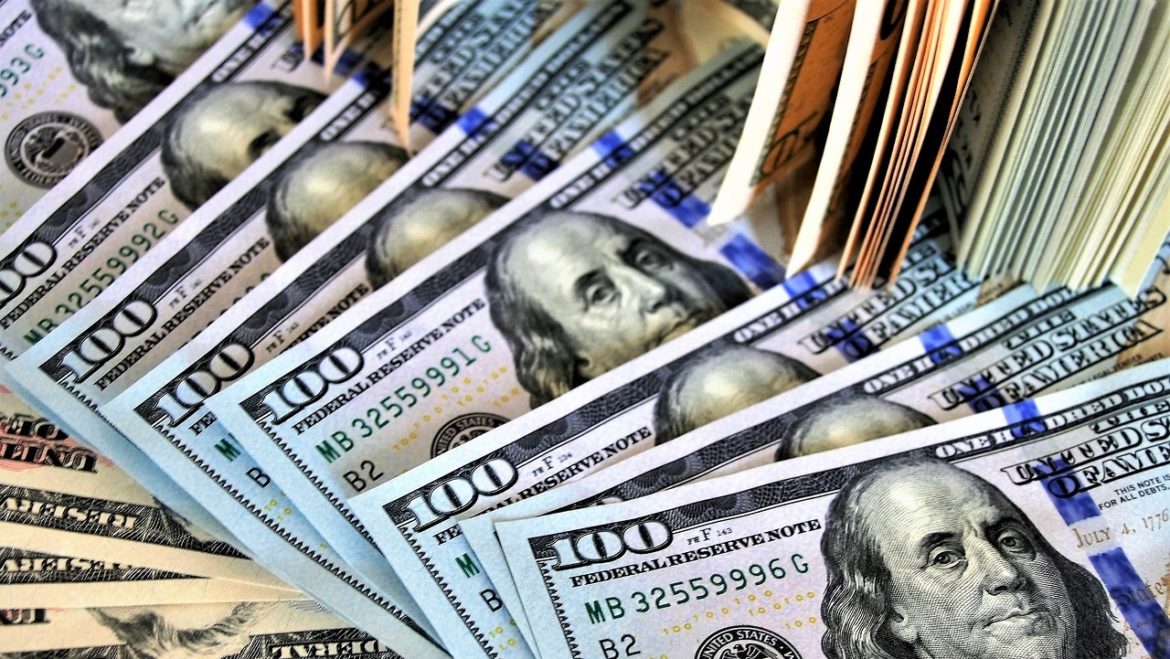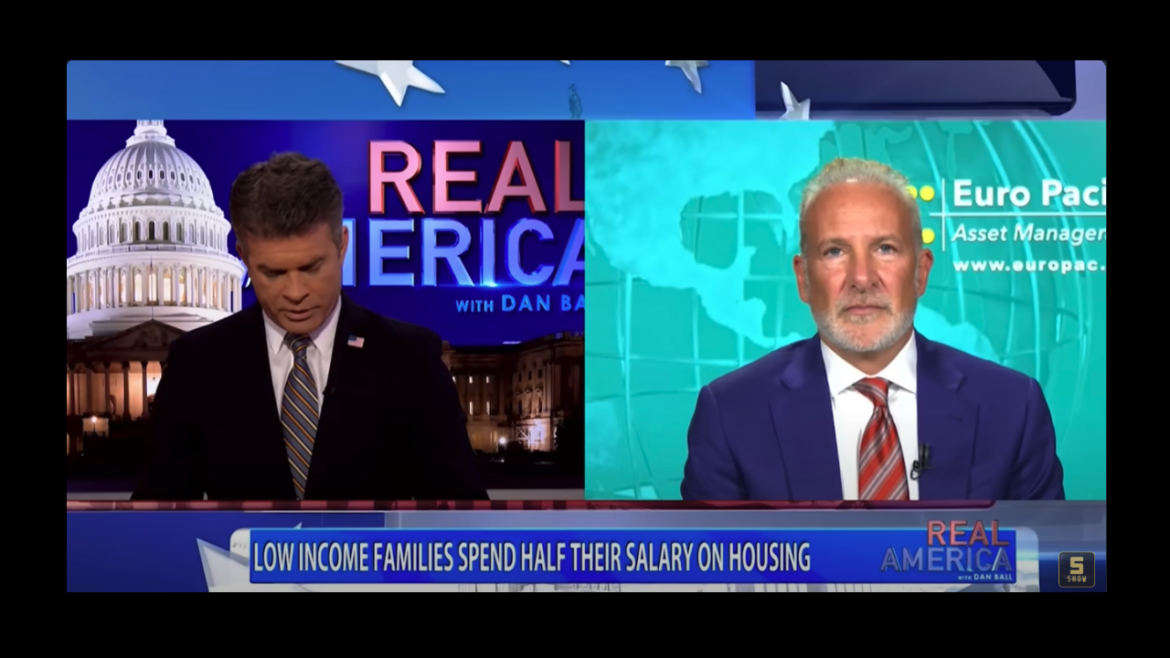Precious metals are apparently waking up. And here is where you can find the best deals.
Site:
Precious metals news
In the precious metals market, while gold has traditionally been the dominant choice, attention is shifting towards silver as we head into 2024. Despite experiencing volatility in 2023, silver shows potential for growth. As of December 2023, silver's price stood at $24.38 per ounce or $783 per kilogram, marking a significant increase of over 5% from the previous year and 3.5% from the previous month. This suggests a recovery from earlier price fluctuations within the year, indicating an emerging trend that could be of interest to investors.
In a recent podcast episode, hosts John Reade and Joe Cavatoni are joined by Tina Fordham from Fordham Global Foresight to discuss the evolving global geopolitical landscape. They examine whether current tensions hint at a long-term escalation and the trend of emerging market central banks diversifying their reserves beyond the U.S. dollar, potentially challenging Western dominance. The conversation also touches on the effectiveness of geopolitical risk indices, changing Western-China relations, and the influence of upcoming U.S. and global elections in 2024.
Dec 20, 2023 - 13:03:13 PST
U.S. stocks, including the Dow Jones Industrial Average, faced a downturn, potentially ending a 10-day winning streak, influenced by a mix of economic data and market dynamics. The recent rally, driven by hopes of a dovish Federal Reserve and lower inflation, hit a pause as investors weighed future economic slowdown and consumer spending trends. Key economic indicators, such as existing-home sales and the consumer-confidence index, showed mixed signals, while company-specific news like FedEx's lowered forecast and Tesla's compensation changes also impacted market sentiment. The market's future direction hinges on upcoming economic reports, including revised GDP figures and the Fed's inflation report.
 Global Markets Soar to Near Two-Year High Amid UK Inflation Drop and Red Sea Tensions
Global Markets Soar to Near Two-Year High Amid UK Inflation Drop and Red Sea TensionsDec 20, 2023 - 08:16:40 PST
Global stocks reached their highest levels since March 2022, driven by a significant drop in UK inflation and a rally in government bonds. UK inflation fell to 3.9%, much lower than expected, prompting increased expectations of interest rate cuts by the Bank of England next year. Consequently, British bond yields declined sharply. In contrast, oil prices surged due to concerns over disruptions in the Red Sea following attacks by Yemen's Houthi militants. The anticipation of rate cuts also bolstered riskier assets like equities, with the MSCI global equity index achieving a record high since March 2022.
The Federal Reserve and the US government create inflation and then blame everybody else.President Joe Biden recently finger-pointed at "greedy corporations," saying they need to "lower prices" now that inflation come down. Whether he is really that ignorant or just lying, Biden's comments serve a purpose. As Ron Paul put it, they gaslight the American public into thinking price inflation is rooted in the actions of private individuals and not the fiat money system.
The prevailing investor belief in a 'soft landing' for the U.S. economy is under scrutiny. While most investors anticipate the Federal Reserve will effectively manage inflation without triggering a recession, some Fed officials are cautioning against this optimism. They highlight the potential risk of the economy overheating in 2024 if inflation remains persistent. This skepticism suggests that the market (and individual investors) may not be fully prepared for the economic challenges that could arise in the year ahead.
The Bank of Tanzania plans to buy 12 tons of gold during the fiscal year in an effort to boost its foreign exchange reserves. The East African nation joins a growing number of central banks turning to gold.
Costco sold more than $100 million worth of gold bars in its first quarter, ending November 26. This announcement was made by the company's CFO, Richard Galanti, during an earnings call. These one-ounce gold bars, namely the PAMP Suisse Lady Fortuna (available on GoldSilver.com right now), usually sell out within a few hours on Costco’s website, highlighting strong demand for gold among its consumer base.
The Tanzanian government, through the Bank of Tanzania (BoT), plans to purchase approximately 12 tonnes of gold from local miners and traders this financial year to boost foreign exchange reserves. This initiative is part of the BoT's Domestic Gold Purchasing Programme, which aims to strengthen foreign exchange reserves by acquiring gold. To encourage more sellers to participate, the government is considering revising its legislation to lower the royalty rate from 9.3% to 7.3%, aligning it with the rate charged at gold refineries. This proposal was discussed in a joint meeting between the government and mining sector stakeholders.
Analysts, including those from J.P. Morgan, are bullish about gold and silver for 2024, attributing their optimism to the Federal Reserve's rate cutting cycle and declining U.S. real yields. J.P. Morgan specifically forecasts gold to average $2,175/oz by Q4 2024, highlighting a strong medium-term outlook for these precious metals. This sentiment is echoed by other market experts, like macro fund manager Bruce Liegel, who suggests that gold prices could rise further in response to central banks' easing rates, particularly if a global recession occurs. The extent of the rate cuts, depending on whether the economy faces a hard or soft landing, is seen as crucial to gold's future trajectory. Additionally, geopolitical tensions and efforts by emerging market central banks, especially China and Russia, to diversify away from the US dollar by increasing their gold holdings, are also recognized as significant factors influencing gold prices.
On Tuesday, the yield on the 10-year U.S. Treasury note dipped, reversing its previous trend, as traders evaluated the likelihood of future interest rate cuts by the Federal Reserve. This decline of about 3 basis points brought the yield to 3.928%, continuing its drop from last Thursday when it fell below 4% for the first time since July. Similarly, the 30-year Treasury bond yield decreased by roughly 3 basis points to 4.041%. In the shorter term, the 2-year note's yield also saw a decline, dropping over 1 basis point to 4.439%. It's important to note that yields and bond prices have an inverse relationship, with one basis point equating to 0.01%.
According to Capital Economics' latest report, the commercial real estate market faces further challenges in the coming year. Hindered by slow economic growth and high interest rates, property values in this sector are projected to drop an additional 10%, following this year's 11% decrease. Deputy Chief Property Economist Kiran Raichura, who penned the outlook, highlights the significant scale of these declines. With the market valued at over $5 trillion by the end of 2022, this year's 11% reduction translates to a substantial loss of approximately $590 billion, and next year's anticipated 10% decrease is expected to result in a further $480 billion reduction in value.
In an interview with the Wall Street Journal, San Francisco Federal Reserve President Mary Daly, indicated that the Federal Reserve might need to consider cutting interest rates to avoid excessive tightening as it continues to combat inflation. On Yahoo Finance Live, Santandar Chief U.S. Economist Stephen Stanley discussed the market's reaction to this statement and recent Federal Reserve communications. Post the December FOMC meeting, Stanley observed that investors seemed encouraged to anticipate more rate cuts. Looking into 2024, he noted that while inflation is declining, the extent of this decrease might be somewhat overstated. Stanley expressed concern that if the Fed cuts rates too soon, it could lead to a resurgence in inflation, necessitating another round of tightening. However, he downplayed this scenario as "not the end of the world."
Dec 19, 2023 - 09:52:50 PST
In November, the LBMA Gold Price AM in USD continued its upward trend, while the Shanghai Gold Benchmark PM in RMB experienced a slight decline due to a strengthening yuan. The Shanghai Gold Exchange saw a notable withdrawal of 132 tons of gold, marking an increase both month-over-month and year-over-year.
Despite these withdrawals, the local gold price premium in China remained high and stable, indicating tight net gold supply. Chinese gold ETFs experienced minor net outflows, leading to a slight decrease in collective holdings and a 1% drop in total assets under management. Additionally, the People's Bank of China reported its thirteenth consecutive monthly gold purchase, increasing its gold reserves by 12 tons to 2,226 tons.
 Canadian Dollar Surges to Highest Since August as Inflation Stays Elevated
Canadian Dollar Surges to Highest Since August as Inflation Stays ElevatedDec 19, 2023 - 09:41:39 PST
The Canadian Dollar reached its highest level since August following the release of inflation data showing that Canada's inflation rate remained at 3.1% in November, contrary to expectations of a decline to 2.9%. This persistence of inflation gives the Bank of Canada reason to maintain its policy rate at the highest in two decades.
Despite forecasts for a decrease, the consumer price index rose by 0.1% month-over-month. Key annual inflation measures, like the trim and median core rates, stayed unchanged at an average of 3.45% year-over-year, surpassing economists' predictions of 3.35%. A significant factor in the inflation rate is the rising cost of housing, largely influenced by central bank rate hikes and high immigration levels, which have led to increased rents.
Dec 19, 2023 - 05:59:04 PST
The physical silver market has experienced a significant imbalance for the last three years, with annual demand consistently outstripping supply. This has led to a 'structural deficit,' a term used by the Silver Institute to describe the prolonged shortfall driven by underlying structural factors like technological advancements and increasing industrial demand. Consequently, this deficit is being met by depleting the world’s finite above-ground silver reserves.
The Silver Institute, a Washington D.C.-based trade association akin to the World Gold Council and composed mainly of silver mining companies and refiners, relies on data from Metals Focus, a London-based precious metals consultancy, for its supply and demand analysis.
Gold prices are consolidating as the US Dollar remains steady near recent lows, with negative impacts from hawkish Federal Reserve (Fed) officials subsiding. The current mild risk appetite, spurred by expectations of an end to the global tightening cycle, is supporting gold. Gold (XAU/USD) has started the week positively, aided by a slight retreat in the US Dollar and low US bond yields. Despite initial effects of hawkish Fed comments last Friday, the Dollar is weakening again at the week's start.
Investors are now focusing on upcoming US Q3 GDP data and the Personal Consumption Expenditures (PCE) Prices Index for further clues on potential rate cuts, which could influence US Dollar volatility and help determine gold's short-term trajectory.
Dec 19, 2023 - 05:40:39 PST
During a recent visit to China, Russian First Deputy Prime Minister Andrei Belousov revealed that 95% of trade between Russia and China this year has been conducted using the Russian ruble and Chinese yuan. Additionally, from January to October, 68% of all Russian trade utilized these two currencies, as stated by Russian Economic Development Minister Maksim Reshetnikov.
The yuan is also being used by Russia for commercial transactions with several countries, including Mongolia, the Philippines, Malaysia, the UAE, Thailand, Japan, Tajikistan, and Singapore. This shift highlights a growing trend towards de-dollarization, particularly in the economies of the Global South, with 2023 marking a significant acceleration in this process. The politicization and use of the dollar as a political tool are cited as key drivers behind this inevitable trend towards de-dollarization.
The Federal Reserve recently surrendered in its inflation fight. But price inflation is nowhere near the 2% target. Why did the Fed raise the white flag prematurely?One of the major reasons is debt.The world is buried under record debt levels and the global economy can't function in a high interest rate environment.
Peter Schiff recently appeared on Real America with Dan Ball to talk about the state of the US economy. He described it as a disaster and said Bidenomics consists of putting lipstick on a pig.








